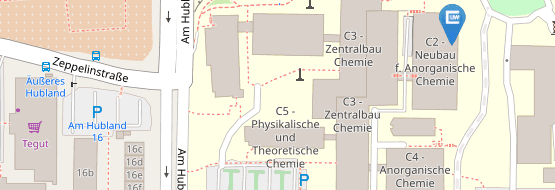Just Published in Angewandte Chemie, International Edition
12/01/2017Deprotonation of a Hydridoborate Anion
Authors: Johannes Landmann, Fabian Keppner, Daniel B. Hofmann, Dr. Jan A. P. Sprenger, Mathias Häring, Sven H. Zottnick, Prof. Dr. Klaus Müller-Buschbaum, Dr. Nikolai V. Ignat'ev, Prof. Dr. Maik Finze
Abstract: The first deprotonation of a borohydride anion was achieved by treatment of [BH(CN)3]− with strong non-nucleophilic bases, which resulted in the formation of alkali-metal salts of the tricyanoborate dianion B(CN)32− in up to 97 % yield and 99.5 % purity. [BH(CN)3]− is less acidic than (Me3Si)2NH but a stronger acid than iPr2NH. Less sterically hindered, more nucleophilic bases such as PhLi and MeLi mostly attack a CN group under formation of imine dianions [RC(N)B(CN)3]2−, which can be hydrolyzed to ketones of the [RC(O)B(CN)3]− type. The boron-centered nucleophile B(CN)32− reacts with CO2 and CN+ reagents to give salts of the [B(CN)3CO2]2− dianion and the tetracyanoborate anion [B(CN)4]−, respectively, in excellent yields.
Link: http://onlinelibrary.wiley.com/doi/10.1002/anie.201611899/abstract



